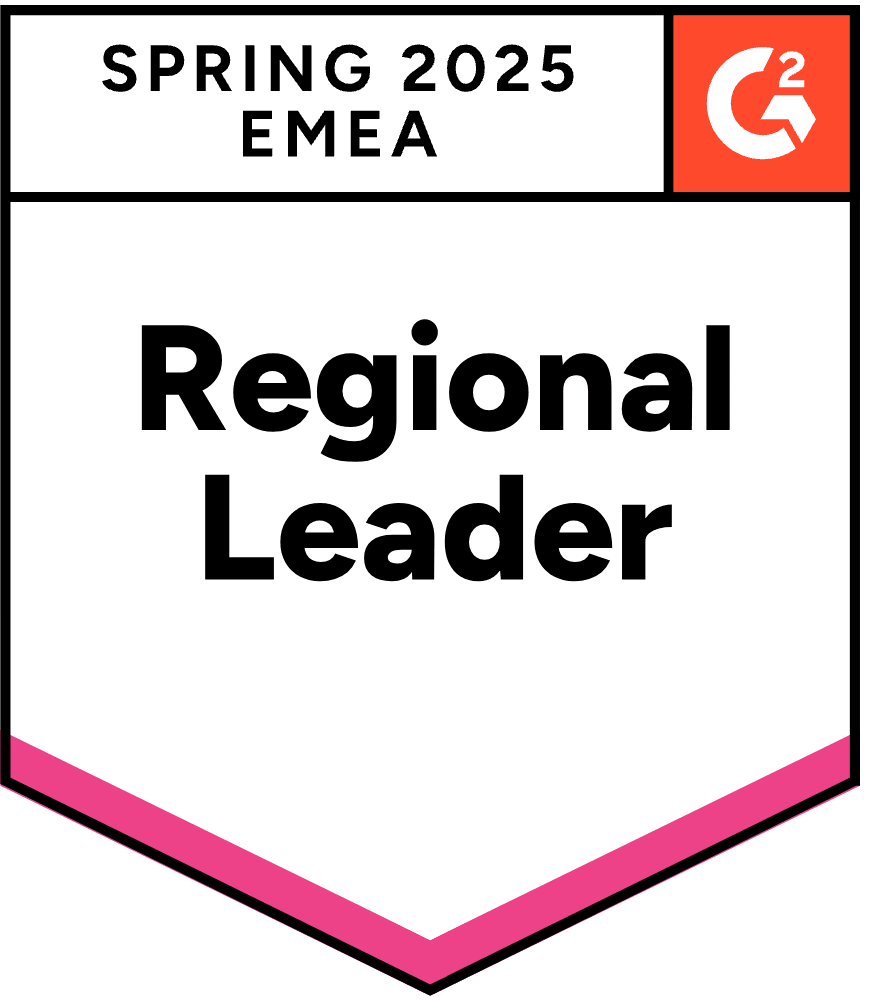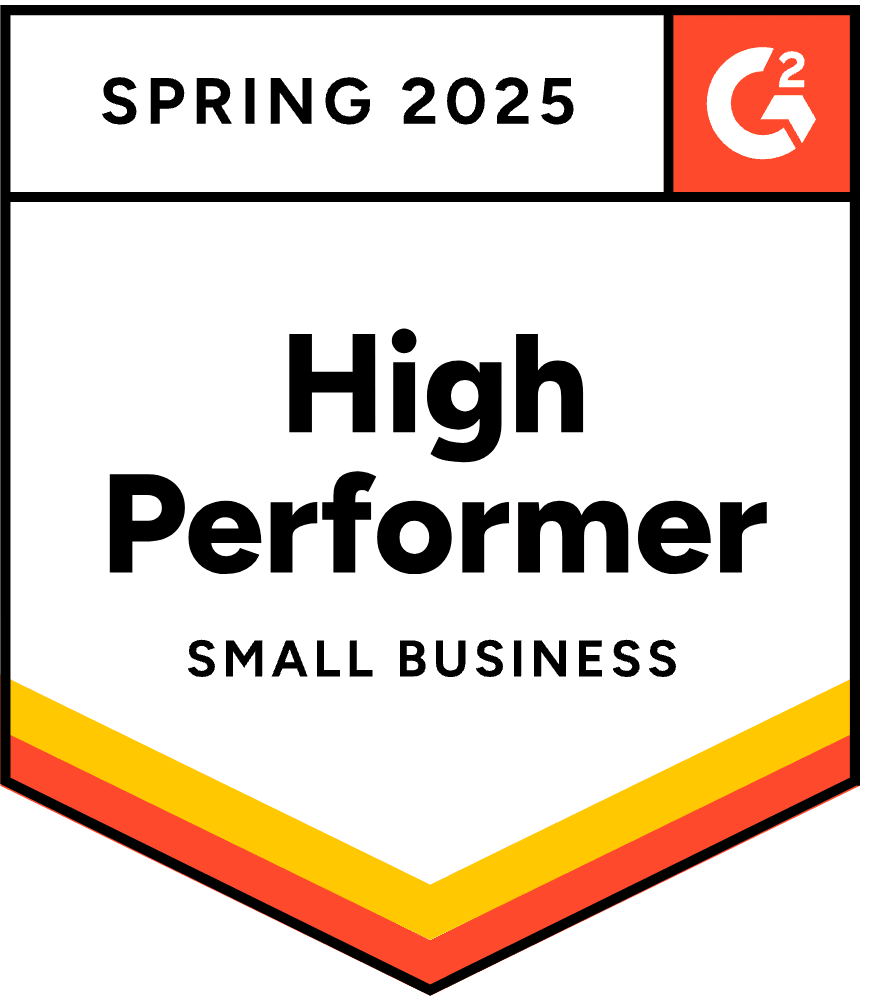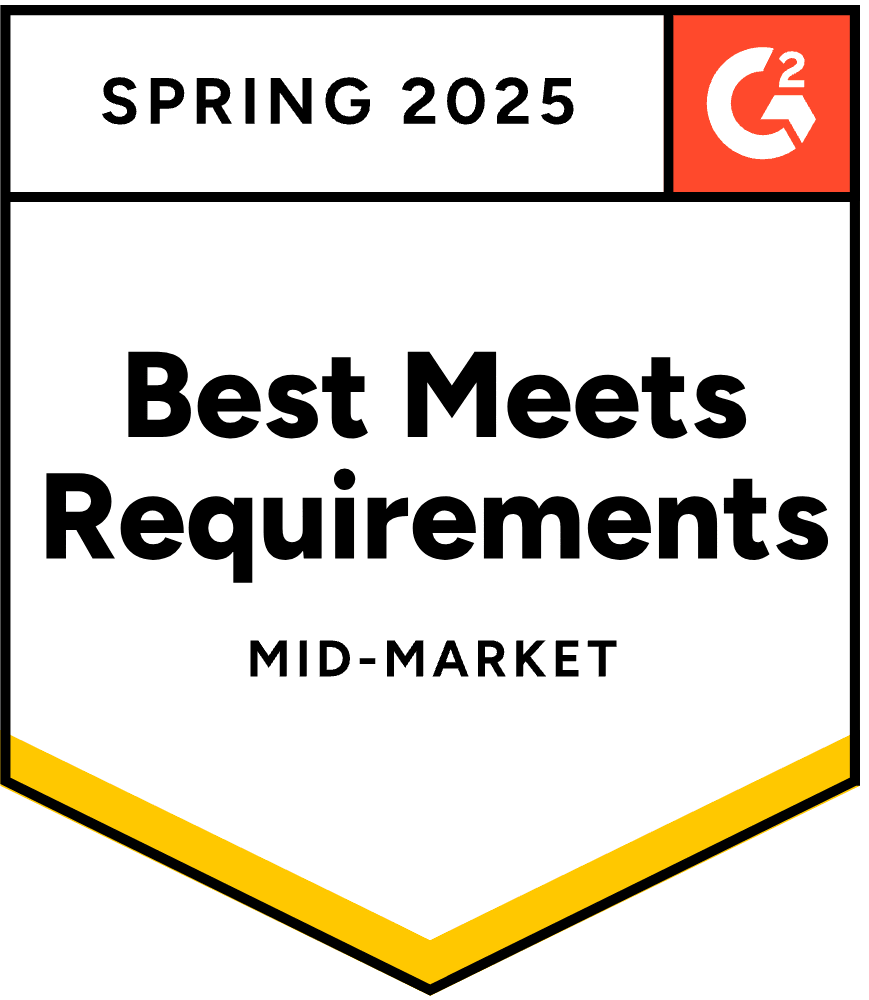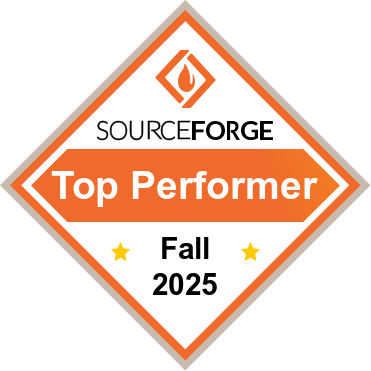- Blog
- 10+ Ecommerce Conversion Rate Optimization Examples You Can Learn From
10+ Ecommerce Conversion Rate Optimization Examples You Can Learn From
Table of Contents
If there’s one thing savvy marketers know, it’s this: why reinvent the wheel when you can reverse-engineer someone else’s success with conversion rate optimization examples?
Learning from what other brands are doing right isn’t just smart—it’s a total power move. That’s why we’ve rounded up 12 real-world ecommerce conversion rate optimization (CRO) strategies from brands who’ve tested, iterated, and won.
From clever popups to personalized product recommendations, these aren’t just ideas—they’re playbook-worthy tactics backed by real-world data.
Let’s break them down and see what you can borrow (or straight-up steal) for your own store.
12 ecommerce conversion rate optimization (CRO) examples
In each of the following examples, an ecommerce brand faced a specific challenge and used smart conversion rate optimization (CRO) tactics to solve it.
1. ParfumeLab: Winning back visitors with gentle nudges
ParfumeLab noticed that a large portion of site visitors weren’t buying on their first visit, but many were coming back. That’s an opportunity.
So, they launched a Browsing Reminder campaign that appeared 10 seconds after a returning visitor came back to the site.
It was a subtle side message, not a full-screen popup—just enough to say, “Welcome back, pick up where you left off.”
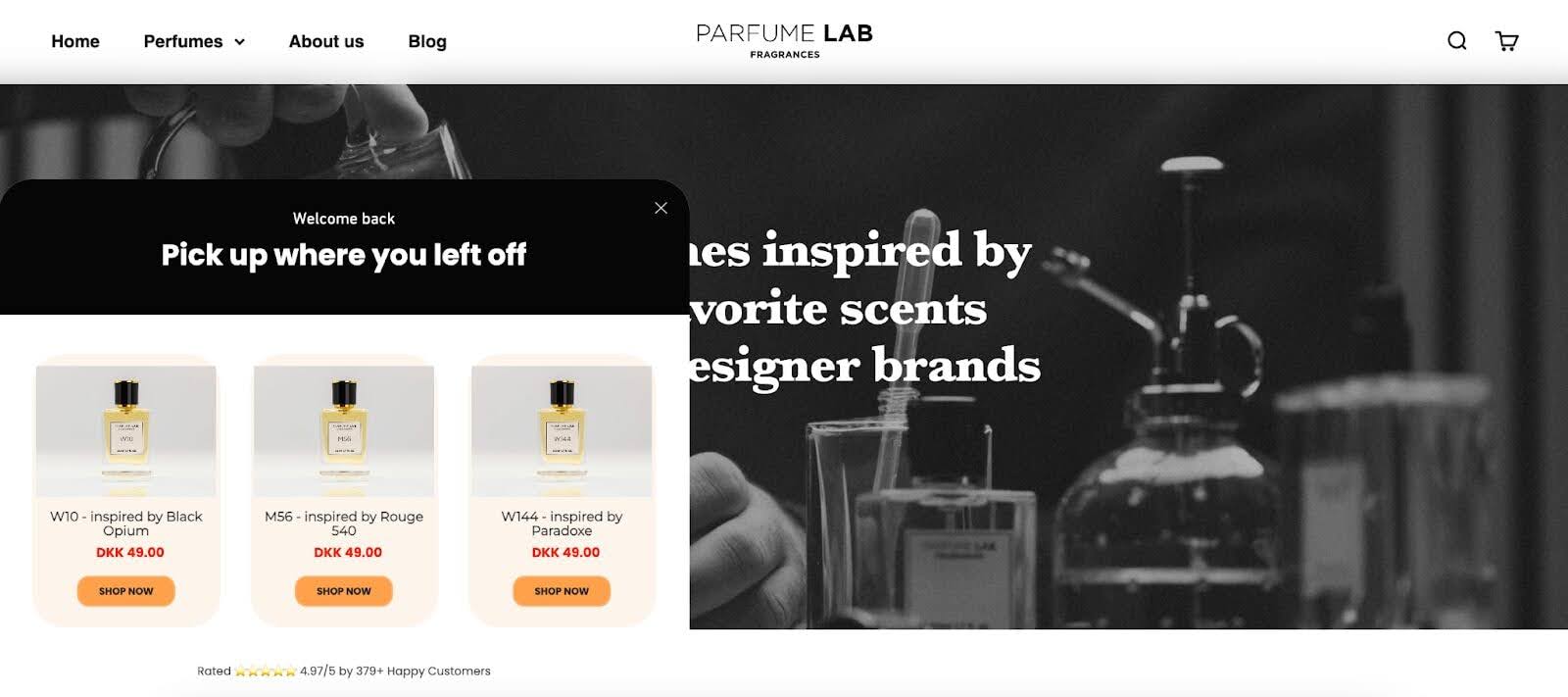
This small tweak led to big results: 19.22% of returning visitors who saw the reminder made a purchase.
Why it worked: It respected the user’s space while reminding them of something they were already interested in. Minimal friction, maximum impact.
See ParfumeLab’s CRO strategy in action.
2. Desert Does It: Converting with a quiz
Desert Does It turned a standard email popup into a multi-step quiz. The quiz helped them collect zero-party data while building a more tailored experience.
They started with a simple yes or no question, making it an effortless first step for site visitors.
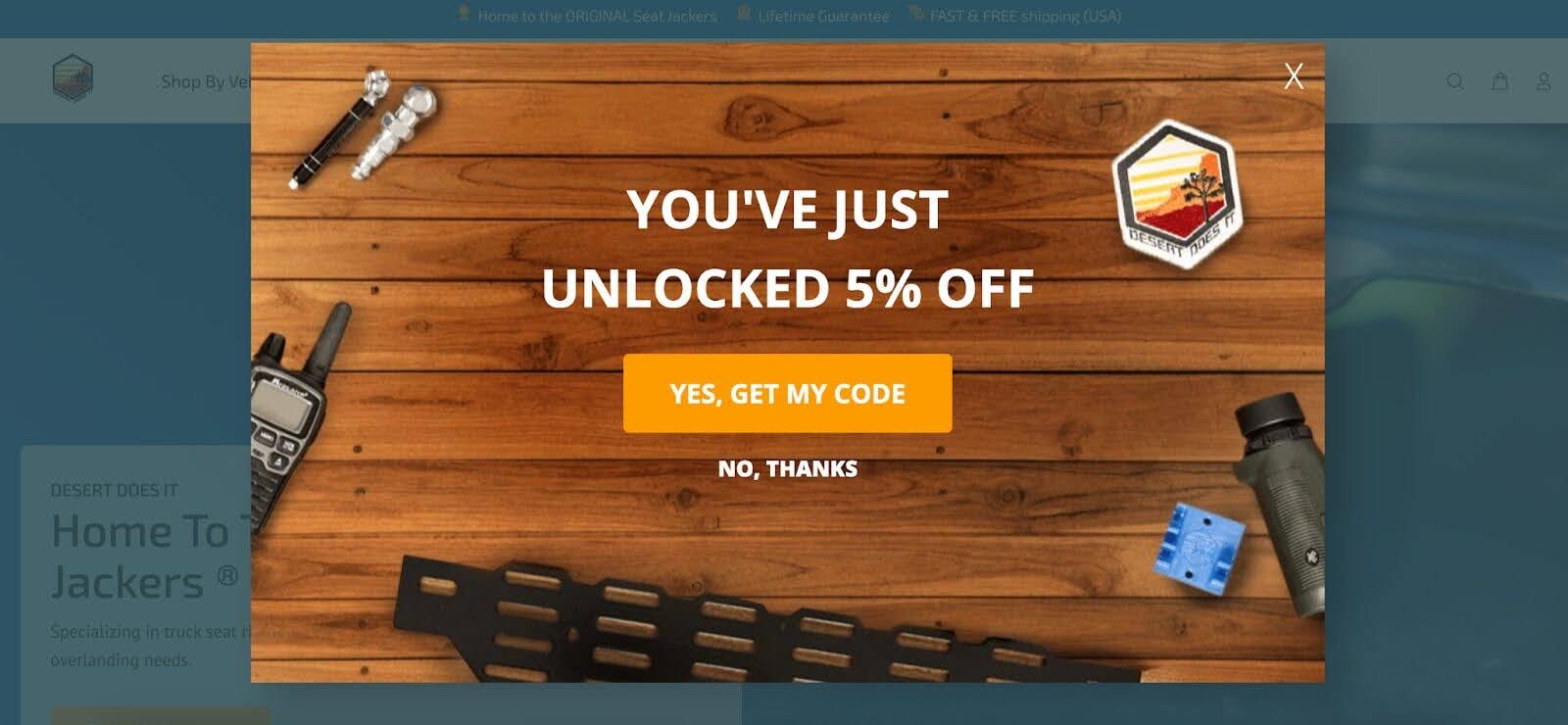
From there, it asked a few more questions designed to give Desert Does It better insight into their potential customers, for example: “What vehicle are you shopping for?”
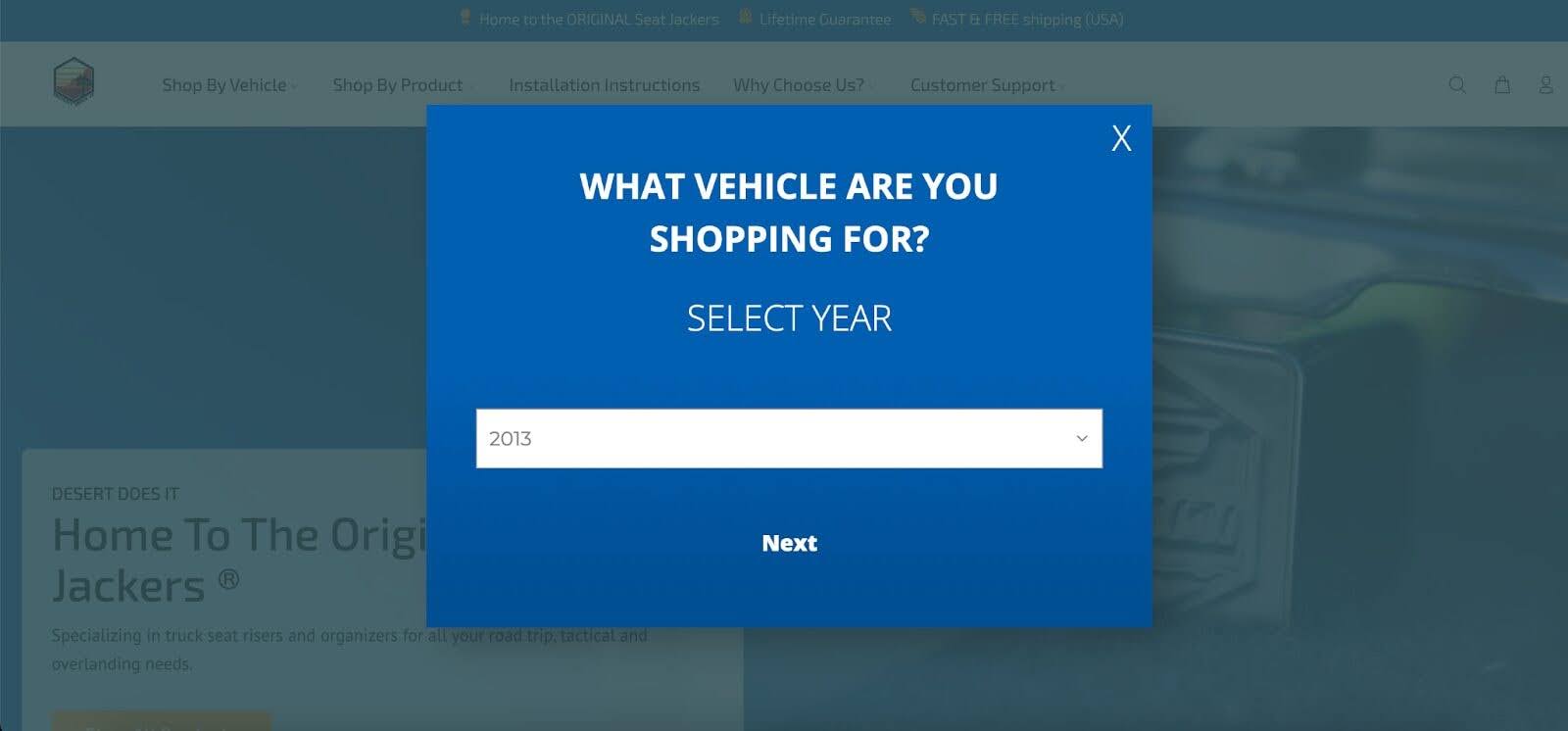
The quiz helped them collect zero-party data while building a more tailored experience. The result? A 4.96% conversion rate, and 85% of email subscribers turned into buyers.
Why it worked: Personalized engagement beats generic messaging every time.
Check out how Desert Does It turned quizzes into sales.
3. Millie N Me: Smart product recommendations
High product page views, low conversions—it’s a frustrating combo. Millie N Me felt the pain.
They implemented OptiMonk’s Smart Recommender Popup, which analyzed visitor behavior and dynamically recommended relevant products.

It paid off, with a 10.25% conversion rate on the popup.
Why it worked: Personalization makes visitors feel seen and increases the odds they’ll find (and buy) what they actually want.
See how Millie N Me made smart product recommendations work.
4. Mechanism: Mystery offer popup
Mechanism had a goal: to grow their email and SMS lists without overwhelming users. Instead of hitting visitors with a form right away, they used a multi-step popup with a fun twist—a mystery offer.
It started with a simple, low-commitment question. After that, users entered their email for a 10% discount and could optionally opt into SMS for a 15% discount.

The results? An 11% email conversion rate and 5% SMS opt-in rate—all from a fun, low-friction experience that used curiosity to keep users engaged and effectively convert visitors into subscribers.
Explore the full Mechanism breakdown now.
5. Gelpro: Reducing cart abandonment
Abandoned carts = lost revenue. Gelpro wanted to fix that.
They set up exit-intent popups that reminded users about what was already in their cart. It was a simple nudge, but an effective one.
This single change resulted in a 6% increase in purchases, and it played a key role in an overall 30% increase in sales over time.

Why it worked: The reminder added urgency and value right at the moment when customers were most likely to leave.
Read Gelpro’s conversion optimization strategy.
6. Nexus Nutrition: Growing SMS without hurting email sign-ups
Nexus wanted to grow their SMS list—but not at the expense of their email conversions. So, they used a smart two-step popup during Afterpay Day that struck the perfect balance.
First, users were asked to enter their email to unlock a mystery discount—no pressure, just curiosity.

Once they opted in, they were offered an optional SMS sign-up for even more perks, like early access to sales.
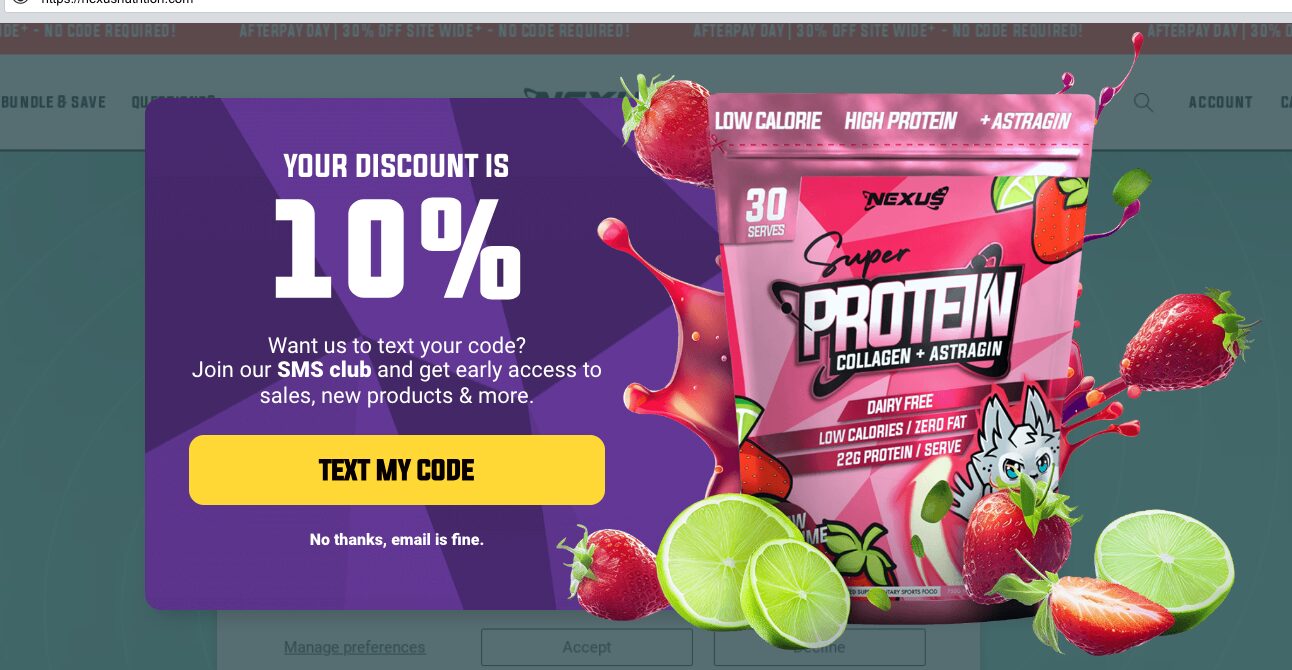
This approach kept email sign-up rates strong while significantly boosting SMS opt-ins.
Why it worked: By separating the steps and keeping SMS optional, Nexus maximized both lists without forcing a choice.
See how Nexus balanced email and SMS growth.
7. NuBest: Personalized health goal popup
NuBest’s mission was to grow their email list and learn more about what their shoppers were really after.
They created a goal-based popup asking visitors what their main health focus was—like better sleep, immune support, or gut health. After answering, users were offered a 15% discount in exchange for their email.
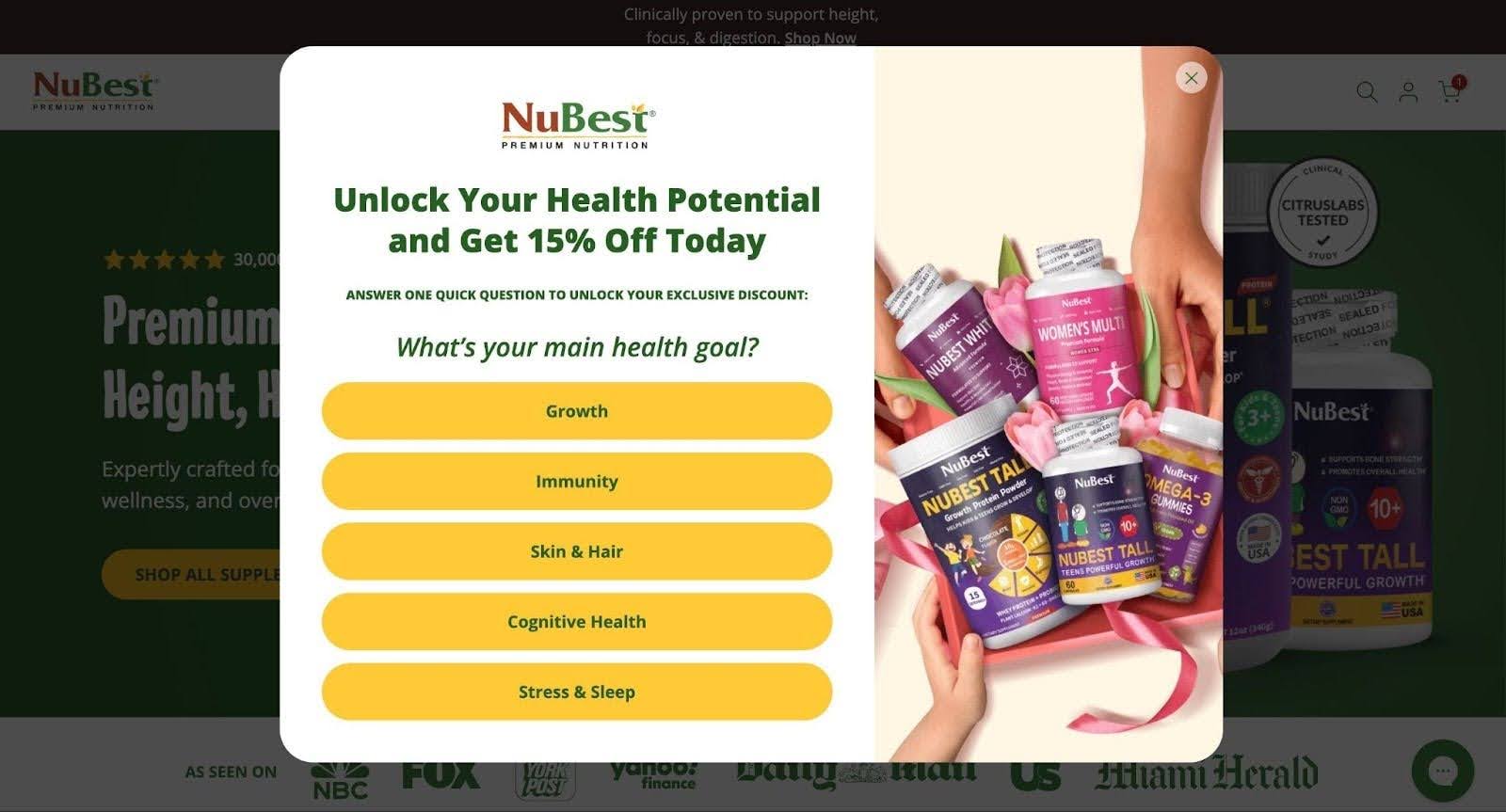
This strategy led to a 7.58% email signup rate and a 20.87% increase in orders among shoppers who saw the popup.
Why it worked: When you tie your offer to customer motivations, it feels more relevant—and that relevance drives action.
Read how NuBest aligned offers with customer intent.
8. SolaGarden: AI-optimized product pages
Optimizing hundreds of product pages sounds like a nightmare, right? SolaGarden found a smarter way.
They used the AI-powered Product Page Optimizer to add high-impact elements to each page, including:
- A catchy slogan
- A quick benefit summary
- A short, persuasive description
- A positive customer review
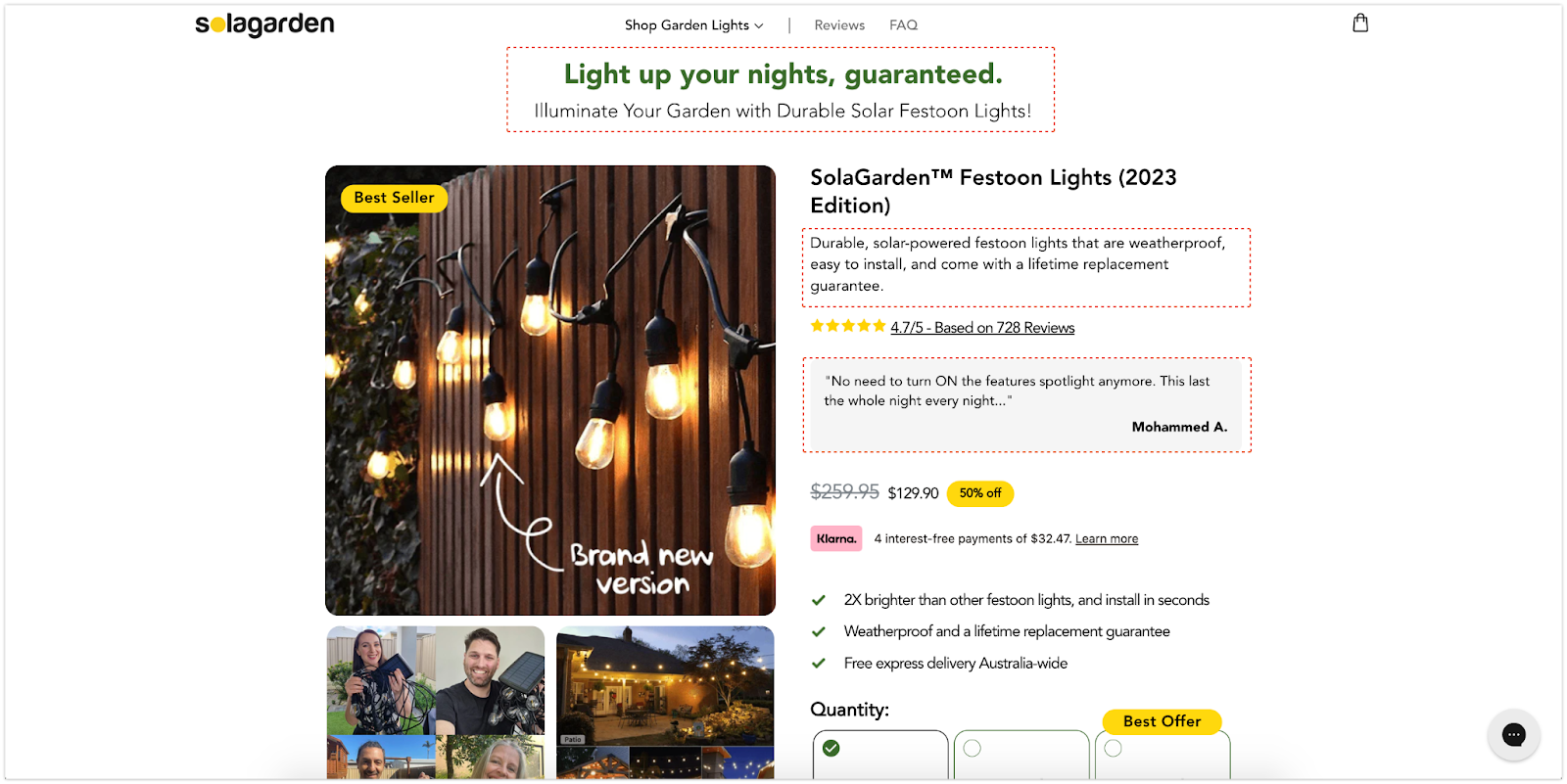
All automated, all aligned with user intent.
Why it worked: Most traffic hits product pages, and AI helped SolaGarden level up every single one without burning out their team.
Learn how SolaGarden used AI for product page CRO.
9. Mott & Bow: Yes/no popup for higher conversions
Mott & Bow had solid traffic, but conversions weren’t keeping up. To fix that, they tested a yes/no popup instead of jumping straight into asking for an email address.
The popup began with a simple question: “Want to pay $26 less for our jeans?”—a low-commitment way to grab attention. Once users clicked “Yes, please” they were taken to the email form.

This small shift helped create a smoother, more engaging flow—and pushed their conversion rate above 10%.
Why it worked: Asking a question first creates a micro-commitment, jumpstarting engagement and encouraging visitors to enter their email.
Read the full Mott & Bow popup strategy.
10. illCurrency: Popup format that converts
illCurrency already had a solid offer—15% off for an email sign-up—but their popup wasn’t pulling its weight.
Instead of rewriting the offer, they changed the format. In the new popup, step one simply asked, “Would you like 15% off?” Only after clicking “yes” did the email form appear.
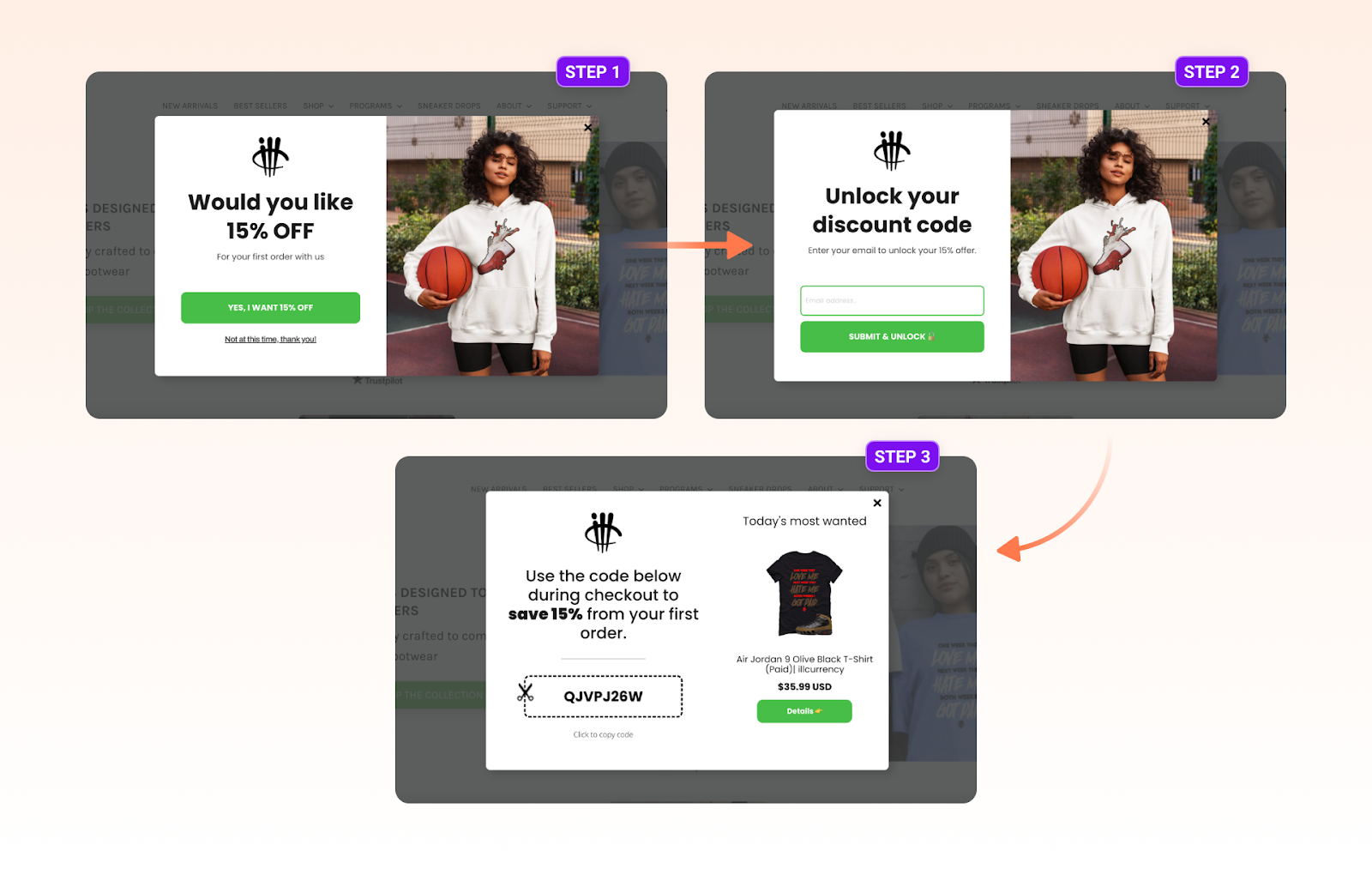
The results? Mobile conversions jumped from 3.83% to 6.75%, and desktop conversions climbed from 1.04% to 1.83%—a 76% total increase.
Why it worked: Micro-commitments matter. Saying “yes” before entering an email makes people more likely to follow through.
See how illCurrency boosted conversions with one tweak.
11. Crown & Paw: Coupon reminder bar for re-engagement
Like many ecommerce brands, Crown & Paw faced the all-too-common issue of a growing email list full of unengaged subscribers—and sluggish sales to match.
Instead of just relying on a discount popup, they implemented a coupon code reminder sticky bar that stayed visible as visitors browsed. It served as a gentle nudge encouraging shoppers to use their discount without being intrusive.
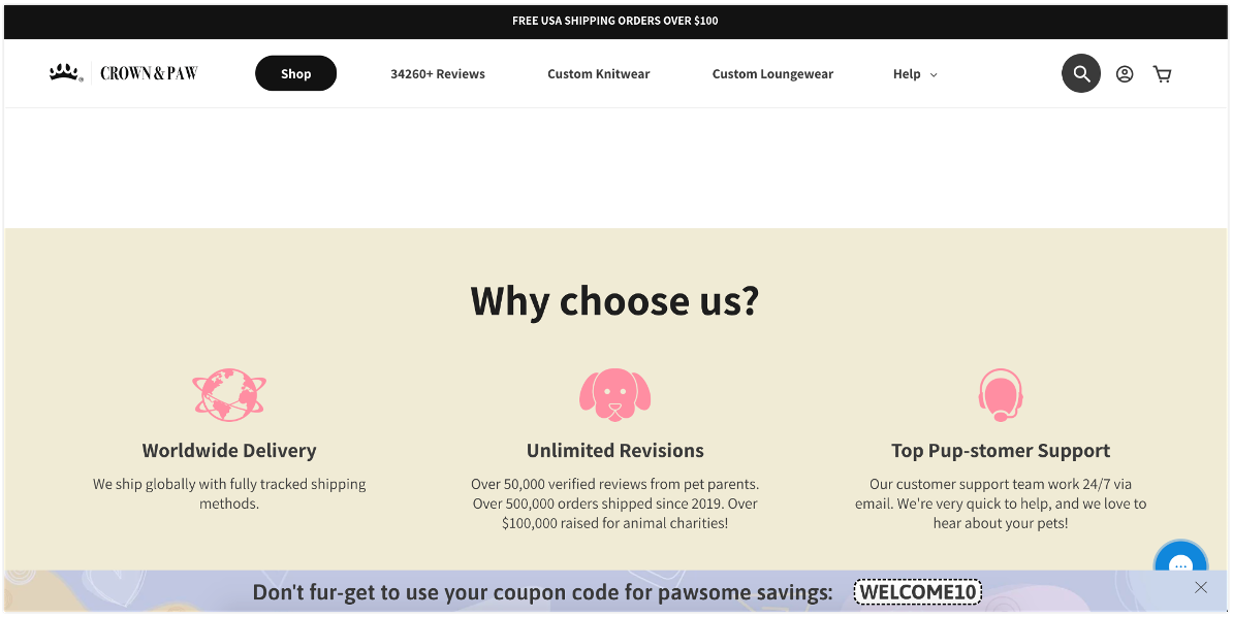
The result? A 38% increase in orders—proof that subtle reminders can drive real revenue.
Why it worked: It kept the offer top of mind without interrupting the shopping experience.
Check out Crown & Paw’s full strategy here.
12. Vegetology: Social proof above the fold
Vegetology had plenty of positive product reviews—but they were hidden at the bottom of the product page where few visitors ever saw them.
To change that, they redesigned the layout by adding a short product description and a powerful testimonial to the above-the-fold area. This helped shoppers instantly understand the product and see that others were happy with it.
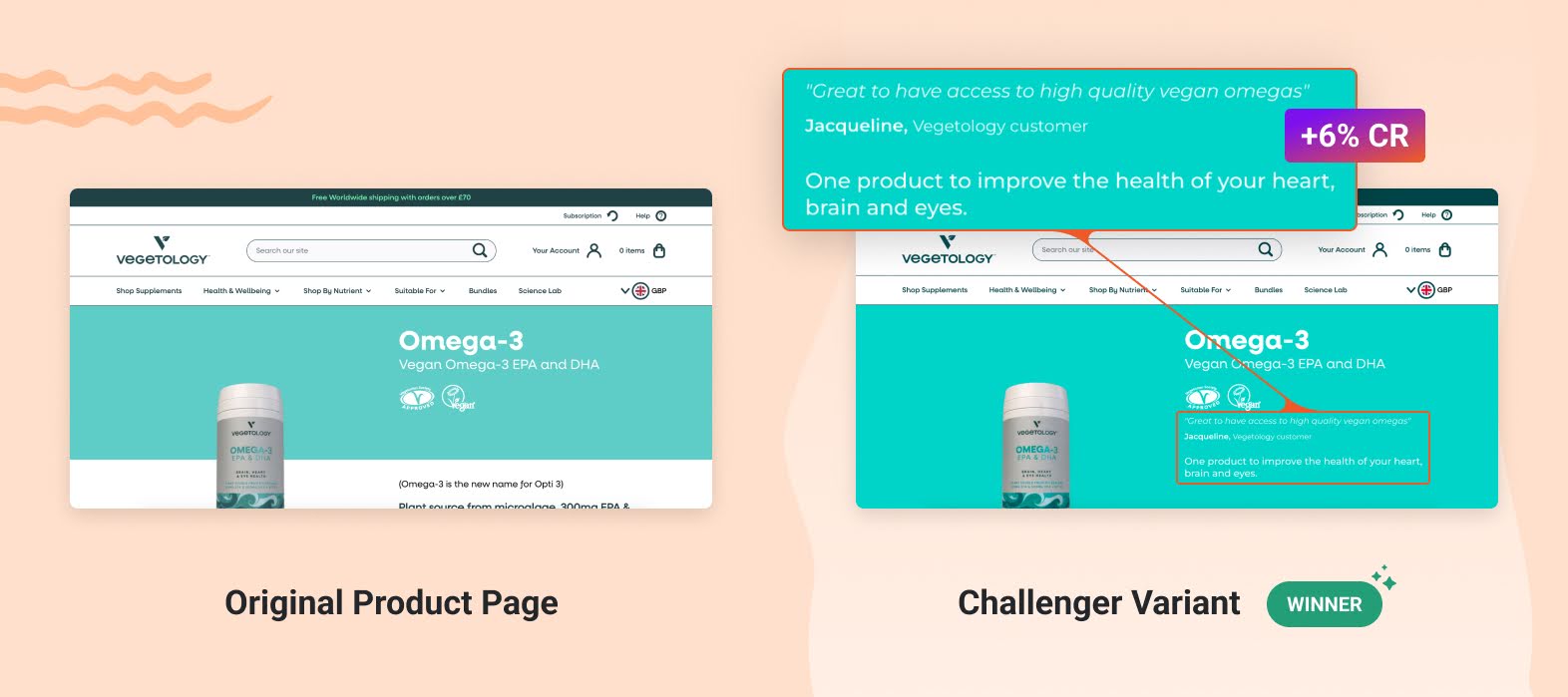
The results? A 6% higher conversion rate and a 10.3% increase in unique purchases.
Why it worked: Social proof placed early builds trust fast, helping hesitant buyers feel more confident.
See Vegetology’s full case study here.
What can you learn from these strategies?
The biggest takeaway from these conversion rate optimization examples? There’s no one-size-fits-all solution to conversion optimization. But there are proven patterns that work when applied in the right context.
Each brand on this list tackled a unique challenge—whether it was cart abandonment, low email sign-ups, or underperforming product pages—and found a solution that fit their audience, offer, and timing.
Here’s what you can take away and apply to your own store:
- Test everything. Timing, format, messaging—even the order of steps in your popup—can dramatically change your results.
- Personalization wins. Whether it’s product recommendations or quizzes, tailored experiences always outperform generic ones.
- Small changes = big gains. Many of these brands didn’t overhaul their entire strategy. They made subtle shifts—like switching to a yes/no popup—that led to double-digit improvements.
- Multi-step popups work. Asking for less upfront and gradually increasing the commitment leads to higher opt-in rates and better lead quality.
- SMS and email can work together. You don’t have to choose one. Done right, you can grow both lists without cannibalizing your results.
By learning from what works for others, you skip the guesswork and start optimizing smarter from day one.
5 best conversion rate optimization tools
Now, let’s break down the 5 best conversion optimization tools to get you started.
1.OptiMonk
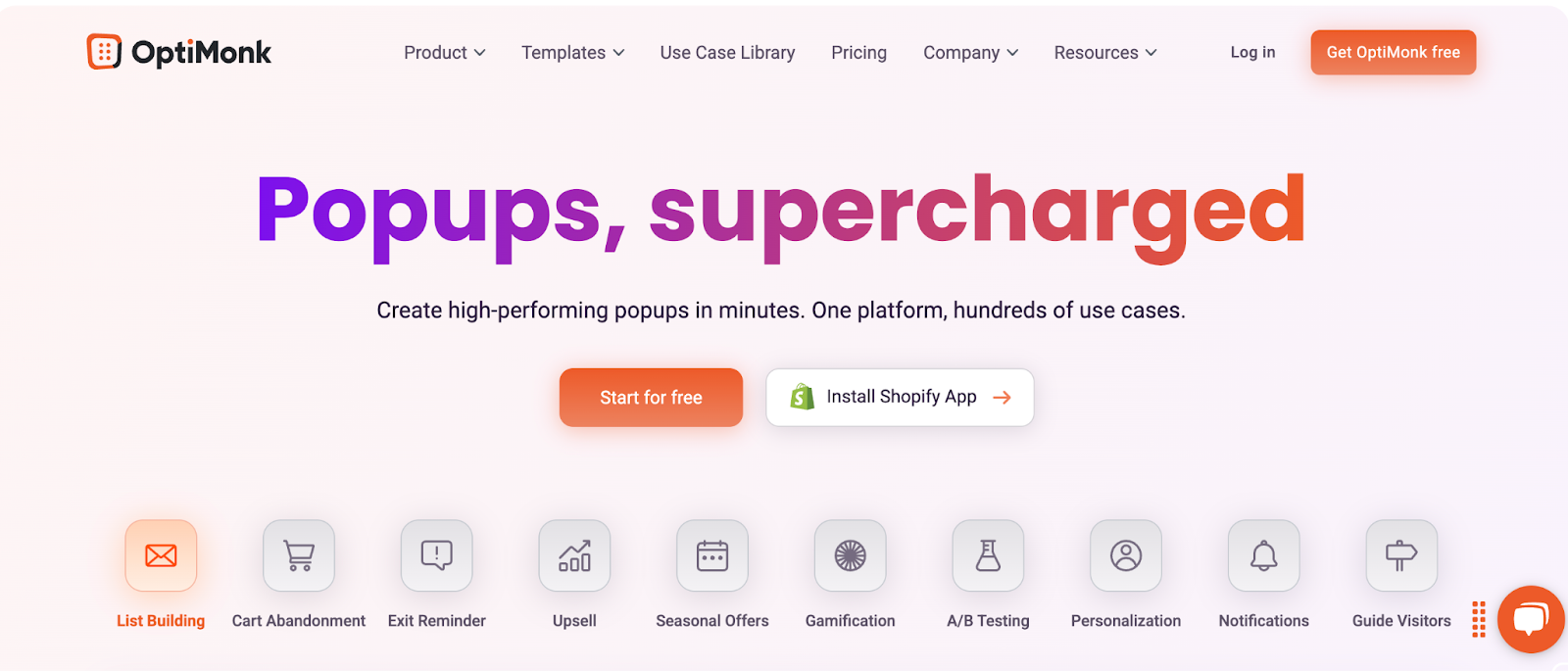
OptiMonk is a leading CRO tool designed specifically for ecommerce. It offers over 300 customizable popup templates and 30+ use cases, from cart abandonment to list building.
Its real strength lies in on-site personalization and behavior-based targeting, allowing you to create offers that feel relevant and timely—without annoying your visitors.
Best for: Ecommerce stores looking for flexible, non-intrusive ways to convert more traffic.
2. Dynamic Yield
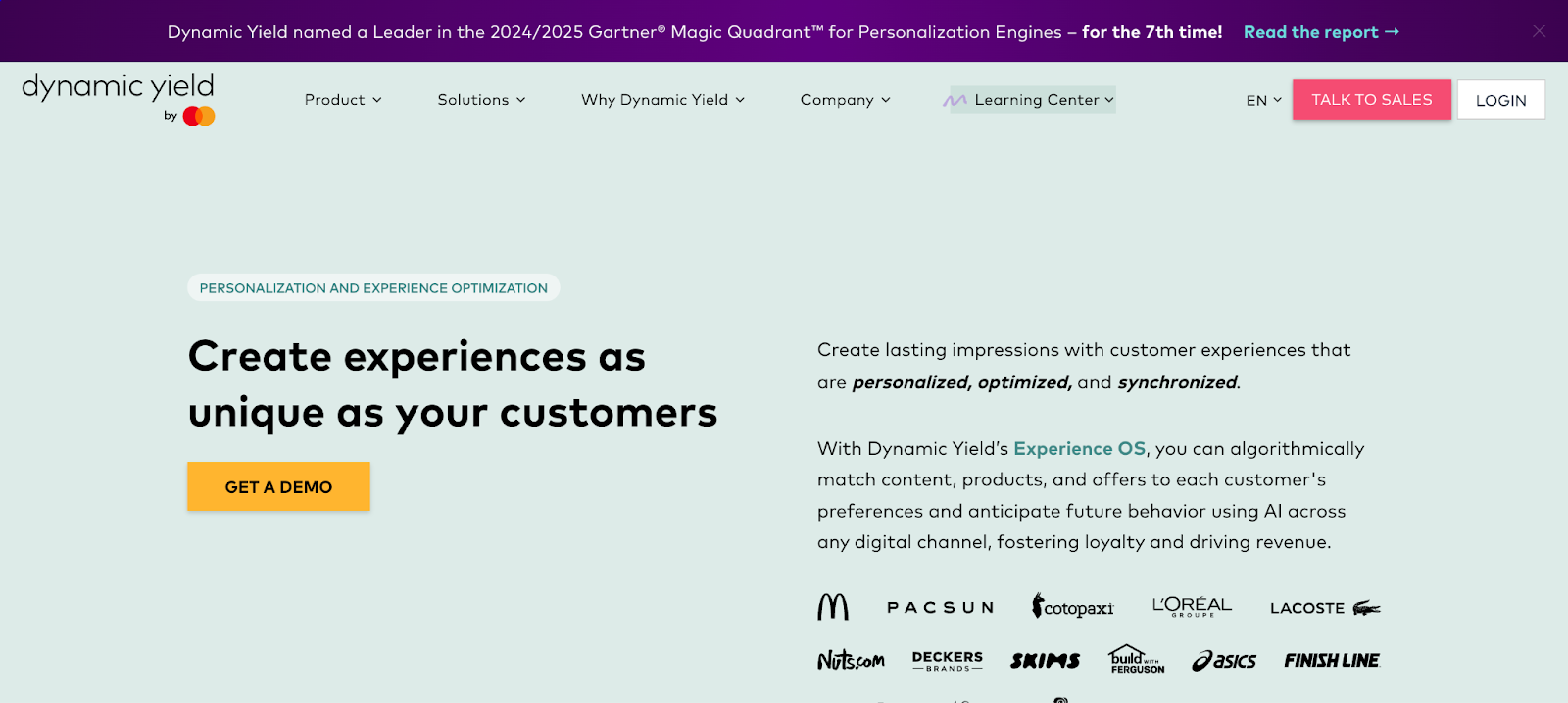
Dynamic Yield is built for brands that want to create real-time, personalized user journeys. It offers tools like dynamic content, AI-driven product recommendations, and trigger-based messaging across web and email. You can segment audiences and personalize everything from landing pages to CTAs.
Best for: Brands with large product catalogs and high-traffic sites that need deep personalization.
3. Personizely
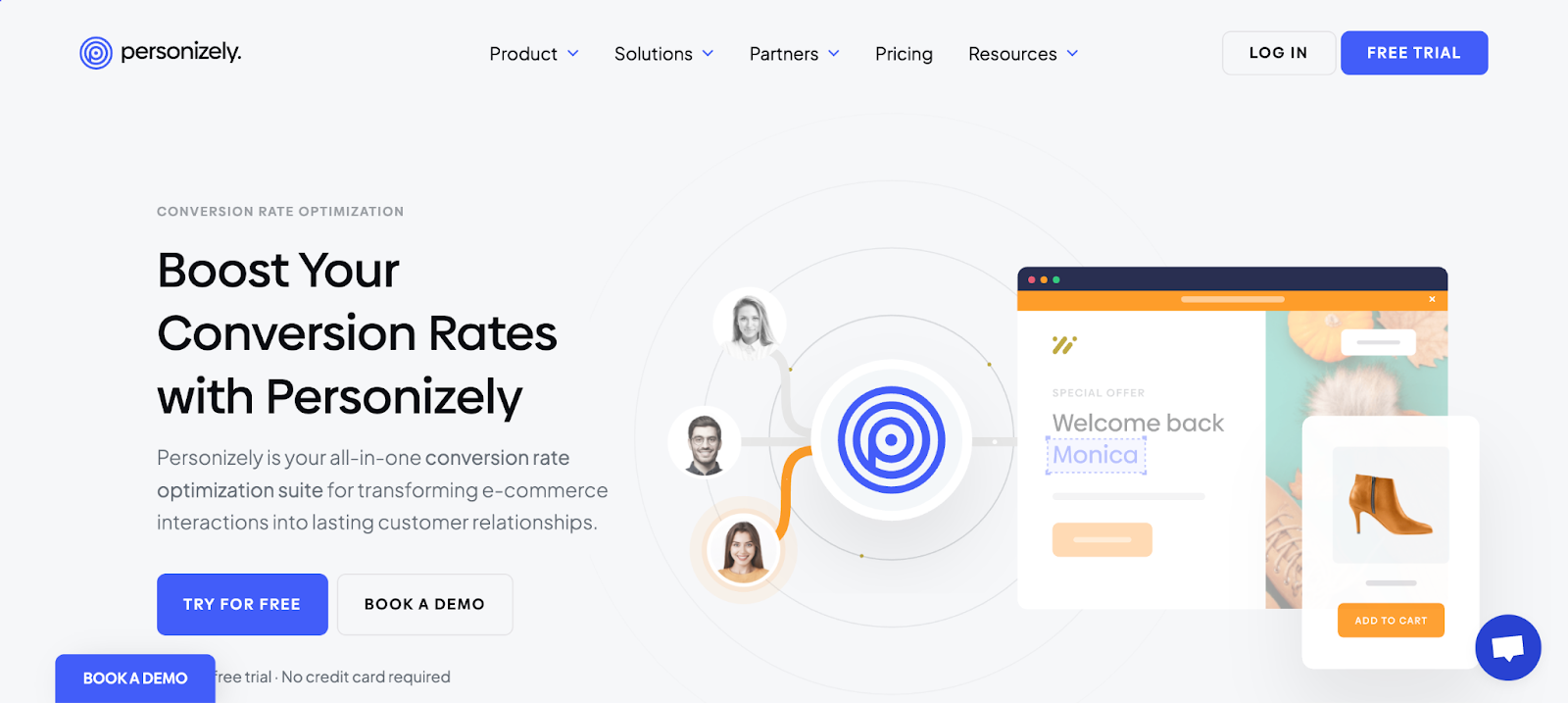
Personizely helps you boost conversions by tailoring your website’s content and messaging based on visitor behavior, interests, and demographics. It supports A/B testing, popup creation, and smart product recommendations—all from one dashboard.
Best for: Businesses that want a streamlined personalization tool with both targeting and popup capabilities.
4. Optimizely
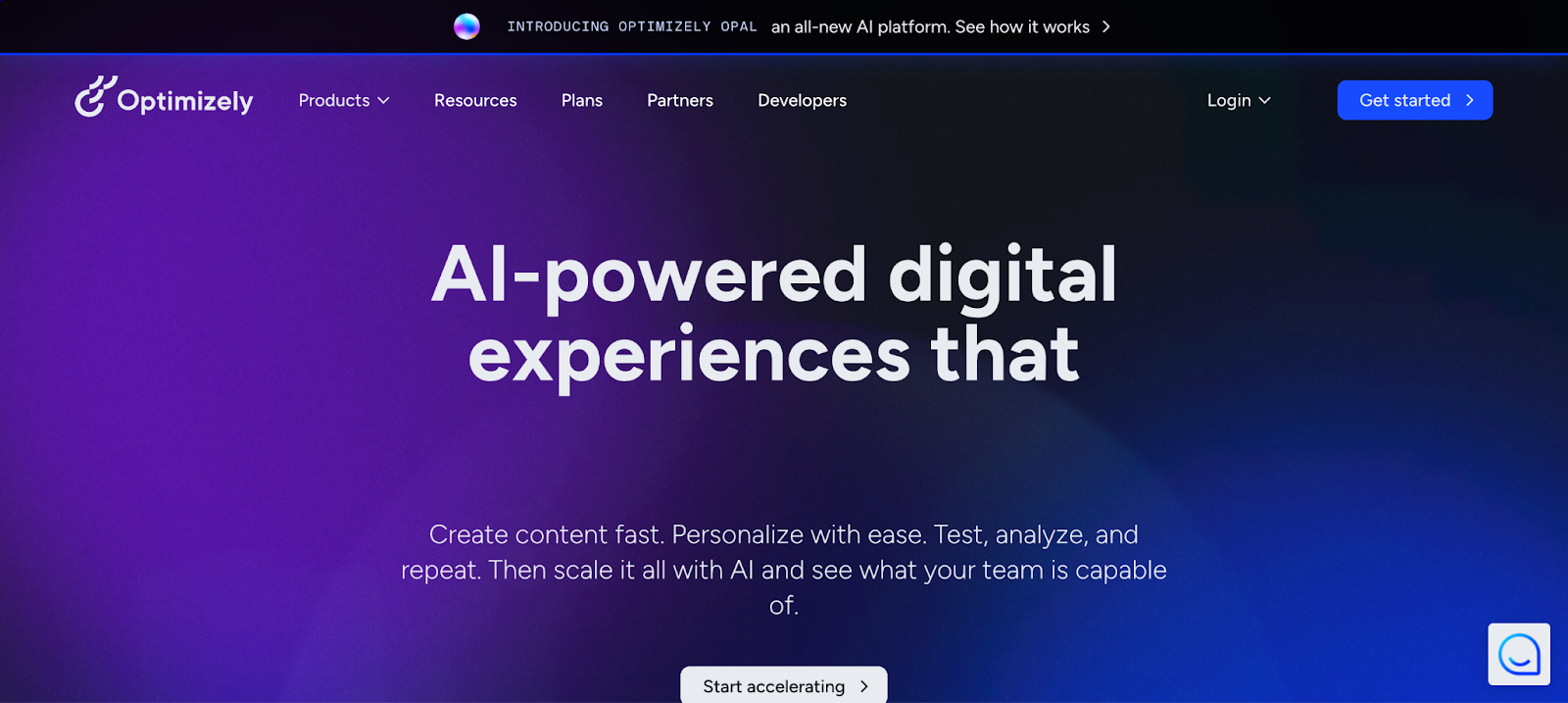
Optimizely is one of the most robust digital experimentation platforms. It’s widely known for its A/B testing capabilities, but also includes personalization, multivariate testing, and advanced targeting. You can test everything from copy to layout—and make data-driven decisions without the guesswork.
Best for: Mid to large ecommerce teams focused on continuous testing and data-backed optimization.
5.OptinMonster
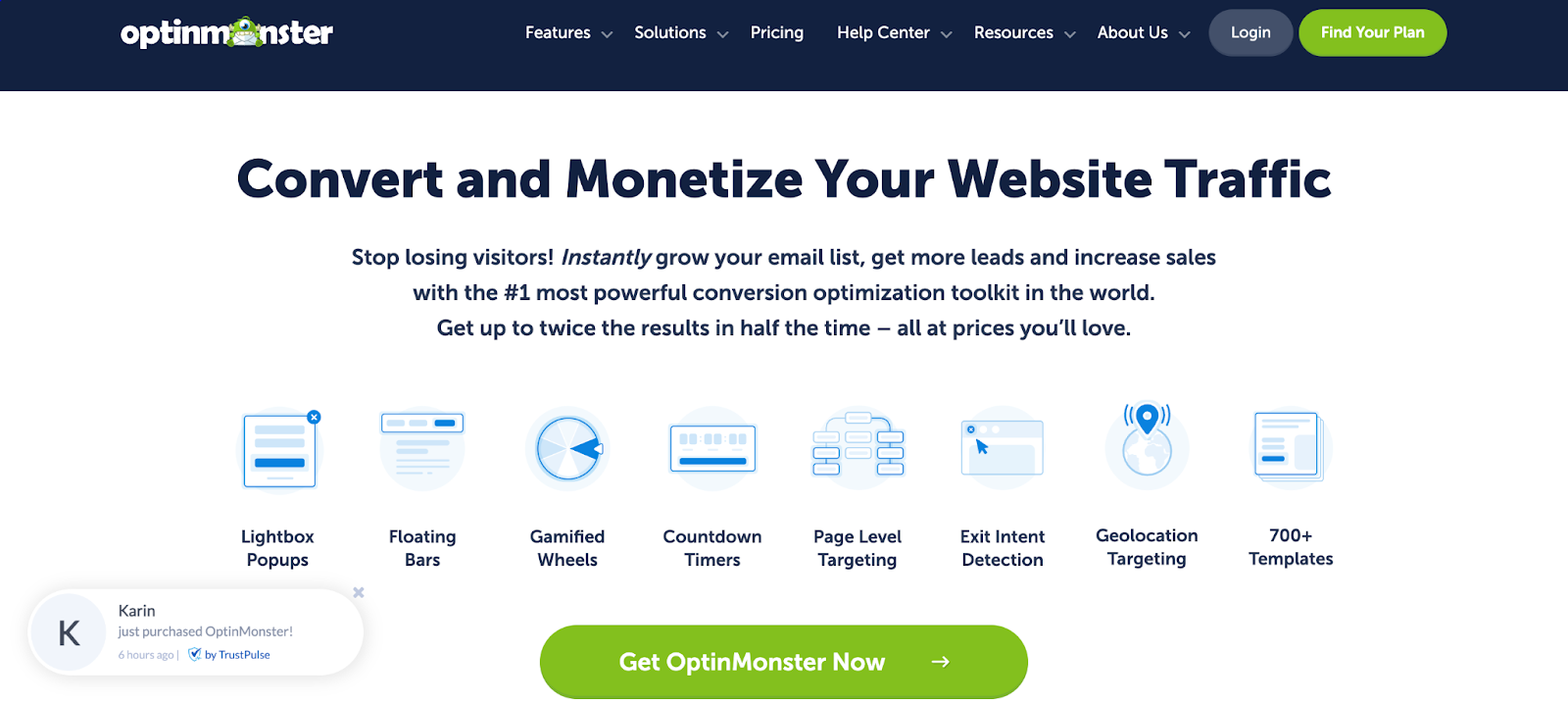
OptinMonster offers a powerful suite of tools to grow your email list and boost conversions. With options like lightbox popups, floating bars, scroll boxes, and exit-intent triggers, it’s highly customizable. Advanced features like on-site retargeting, lead segmentation, and purchase history targeting make it a favorite for marketers who want smart targeting without complexity.
Best for: Marketers who want flexible popup options with detailed targeting and analytics.
FAQ
How do I know which CRO strategy is right for my store?
Look at your biggest drop-off points—are you dealing with cart abandonment, low email sign-ups, or poor product page engagement? Once you know where you’re losing customers, pick a tactic that directly targets that issue. For example, use conversion rate optimization tools like OptiMonk to implement exit-intent popups for abandoned carts or quizzes for better lead quality.
What’s a good website conversion rate for ecommerce?
A solid ecommerce website conversion rate typically falls between 2% and 3%, but top-performing stores see rates closer to 5% or even higher. According to OptiMonk’s data, the average ecommerce conversion rate is 2.96%, with the top 20% of stores reaching 5.31%, and the top 10% hitting 6.91% or higher.
Are mystery offers and quizzes really effective?
Yes, when done well. Mystery offers spark curiosity, and quizzes create personalized experiences. Both are great for grabbing attention, collecting high-quality leads, and boosting conversions.
Wrapping up
Great marketers don’t work in a vacuum. They learn, adapt, and optimize based on what’s already proven to work.
Whether you’re just getting started or already running high-traffic campaigns, these ecommerce CRO examples give you a shortcut to better results—without all the trial and error.
Ready to take some of these strategies for a spin? Explore all our CRO case studies, sign up for OptiMonk, and start testing what actually works!
Migration has never been easier
We made switching a no-brainer with our free, white-glove onboarding service so you can get started in the blink of an eye.
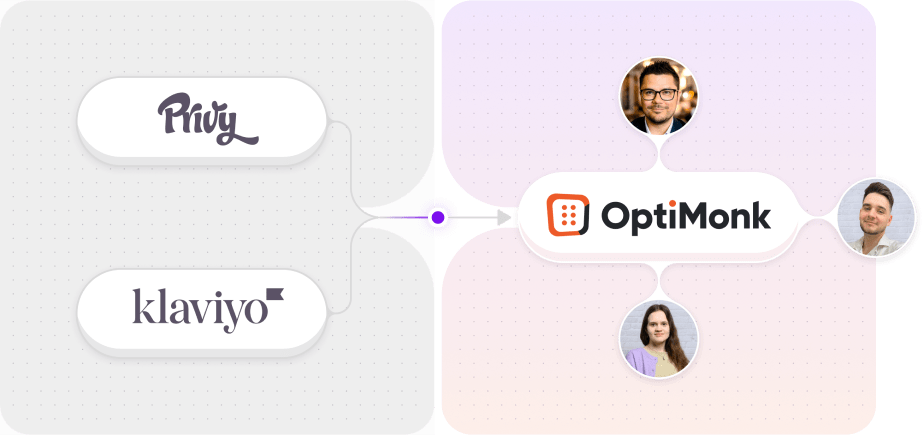
What should you do next?
Thanks for reading till the end. Here are 4 ways we can help you grow your business:
Boost conversions with proven use cases
Explore our Use Case Library, filled with actionable personalization examples and step-by-step guides to unlock your website's full potential. Check out Use Case Library
Create a free OptiMonk account
Create a free OptiMonk account and easily get started with popups and conversion rate optimization. Get OptiMonk free
Get advice from a CRO expert
Schedule a personalized discovery call with one of our experts to explore how OptiMonk can help you grow your business. Book a demo
Join our weekly newsletter
Real CRO insights & marketing tips. No fluff. Straight to your inbox. Subscribe now
Barbara Bartucz
- Posted in
- Conversion
Partner with us
- © OptiMonk. All rights reserved!
- Terms of Use
- Privacy Policy
- Cookie Policy
